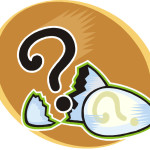
The second edition of the Real Academia’s spelling and grammar rules, in the year 1754, declared the use of the inverted question mark as mandatory. This norm, however, would not become widespread until almost a century later, since from the mid-18th until the mid-19th century the Real Academia Española [Royal Spanish Academy; Spanish institution responsible for overseeing the Spanish language] would not have the corporate nor institutional nature that Isabela’s monarchy would eventually grant it.
In many cases, the presence of the inverted question mark helps to give the sentence in question the corresponding tone without having to read the entirety of the structure. For example, whereas the English language separates the auxiliary verb from the principal one or inverts the order of the verb and subject in order to indicate the interrogative nature of the phrase, the Spanish language – aside from the initial inverted question mark at the beginning – places accent marks on the relative pronouns what, who, how, etc.
On platforms such as Twitter, where the well-known number of characters available to condense an idea directly impacts the importance of synthesis, the inverted question mark at the beginning seems to be one of the first candidates to be left out when it comes to stating a question.
It could also be considered that the Anglo-Saxon hegemony on an international level has heavily influenced the design of keyboards of different cellular phones in such a way as to make inverted exclamation and question marks just a secondary function which is accessed by a double command, as opposed to question and exclamation marks at the end which are quickly and easily located.
Do inverted exclamation and question marks have their days numbered? Is it possible that those responsible for grammar standards spread the word about what is happening in the new means of communication, where a large part of the world population is expressing its interpersonal interactions in writing?
For the Spanish version of this blog, click here.





